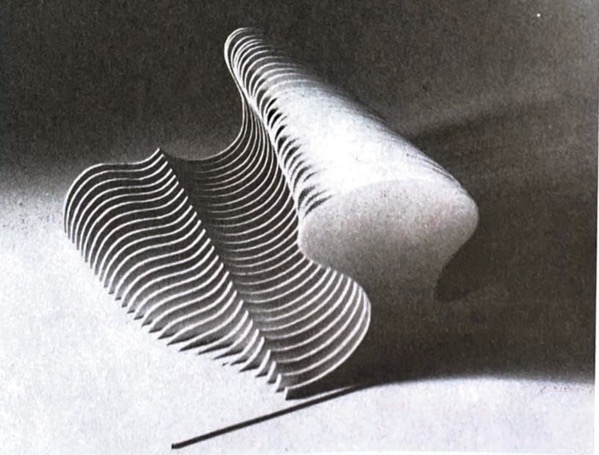Shape and Form-Serial Planes
In this assignment you will be building 3 small sculptures that imply forms in different ways. One will be constructed from planes, one from lines, and one from both. Your materials will be chipboard, square wooden dowels, and hot glue.
What is a Form?
Form refers to the singular area of space that is filled with matter (or, at least appears to be!). It is a distinct unit perceivable to the viewer and delineated from its surroundings.
This idea of delineation or separation, that it is a 3d body that is perceivable is what gives the interpretation of form so many possibilities. How do we delineate it?

So form is an independent, three dimensional mass or volume where mass generally refers to a positive solid and volume refers to a negative, open space surrounded by material, as in a bowl or other vessel.
There are innumerable ways to understand, represent, and make a form. Take the common cube for example. A cube may be thought of as:
-A block that is cut from a larger mass, Retirement by Westen Charles

Cast from a liquid material like this chocolate and lard work by Janine Antoni.
(These forms were cast, then shaped by the artist’s mouth) In the case of casting there is a volume that becomes a mass!

-4 planes attached at their edges as in this work by Richard Serra
Forms can be built structures

Or the planes can be in a series in the same orientation as in this work by Felix Gonzales-Torres.
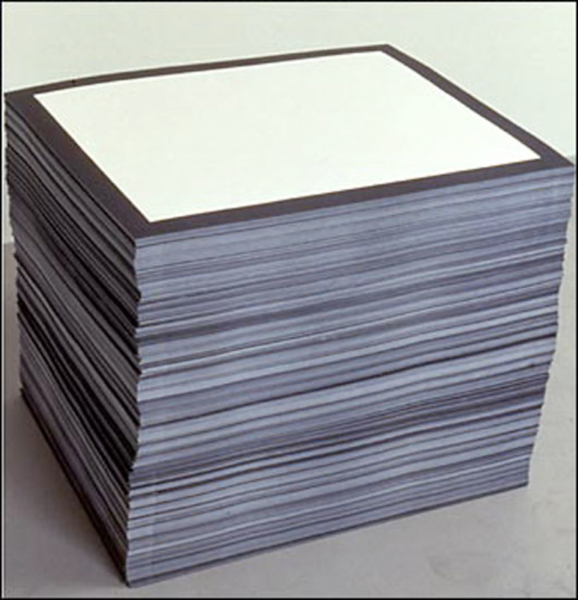
-A district unit of space filled with matter. This stone work is by Damián Ortega.

Sometimes forms are implied, as in this implied cube by Tom Friedman
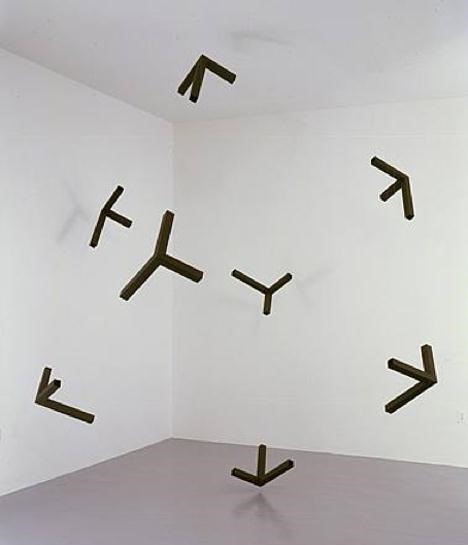
-Or any other number of conceptual structures.
This work by Josepth Kosuth is a good example of the many ways of thinking about the area that form occupies.

So, a form is the idea of an entity in space. A distinct unit perceivable to the viewer and delineated from its surroundings.
As a designer or artist, you create the method in which this entity is manifested. Like in the relief project, an implied form gives the viewer room to fill in the blanks, allowing for increased visual engagement.
For the first part of this assignment, we will manifest implied, complex forms using serial planes.
Part 1 Serial Planes
Utilizing at least 15 parallel planes separated by small sections of wooden dowels, you will construct a form from a group of shapes that that gradually morph from one profile to another. This will create an implied asymmetric positive form that is intersected with a negative form.
-Imagine the path of a plane as it moves in a direction opposed to to its x and y axis,

This is a way of describing this form, a rectangular solid

If we combine the two, we get this

If that plane changes shape,

It will describe a more complex form, one that could look like this:
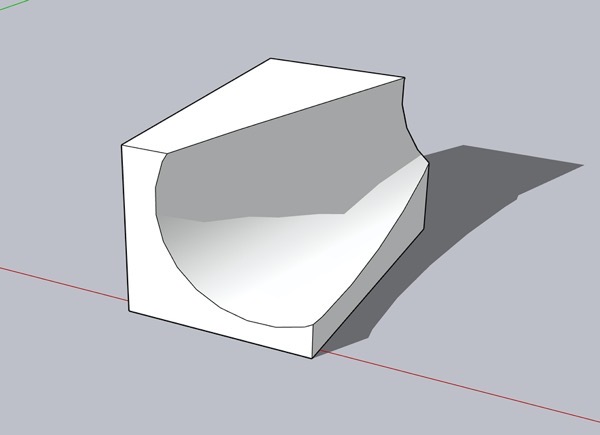
Now make that out of separate planes with a space in between, and you have:
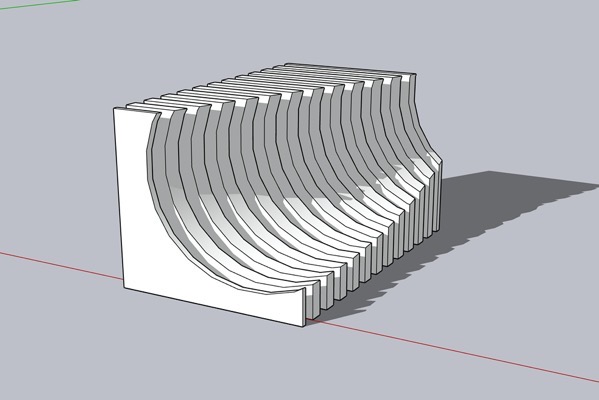
Which is a complex form that implies:

A complex union of solids, placed in the viewers mind using nothing but a series of slightly different shapes next to one another. Magic!
From “Principles of Form and Design” by Wucius Wong


